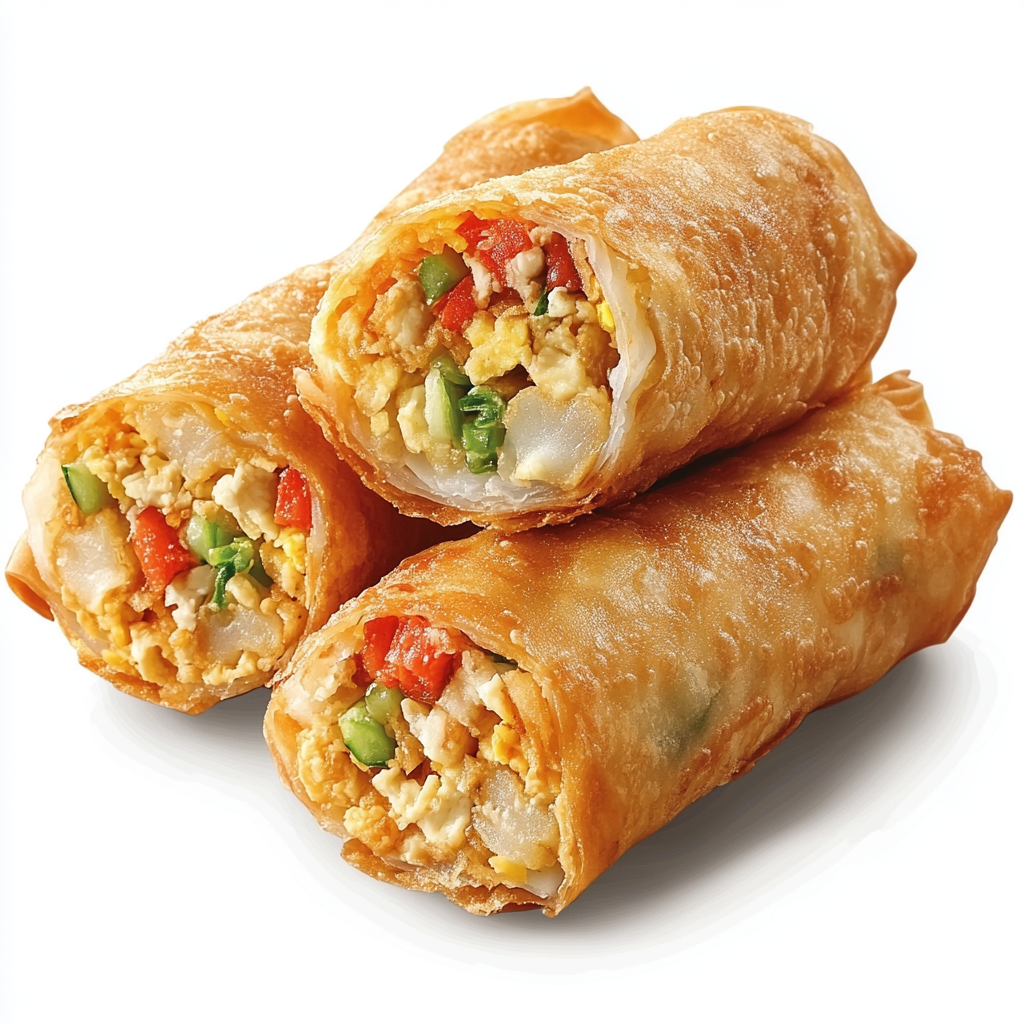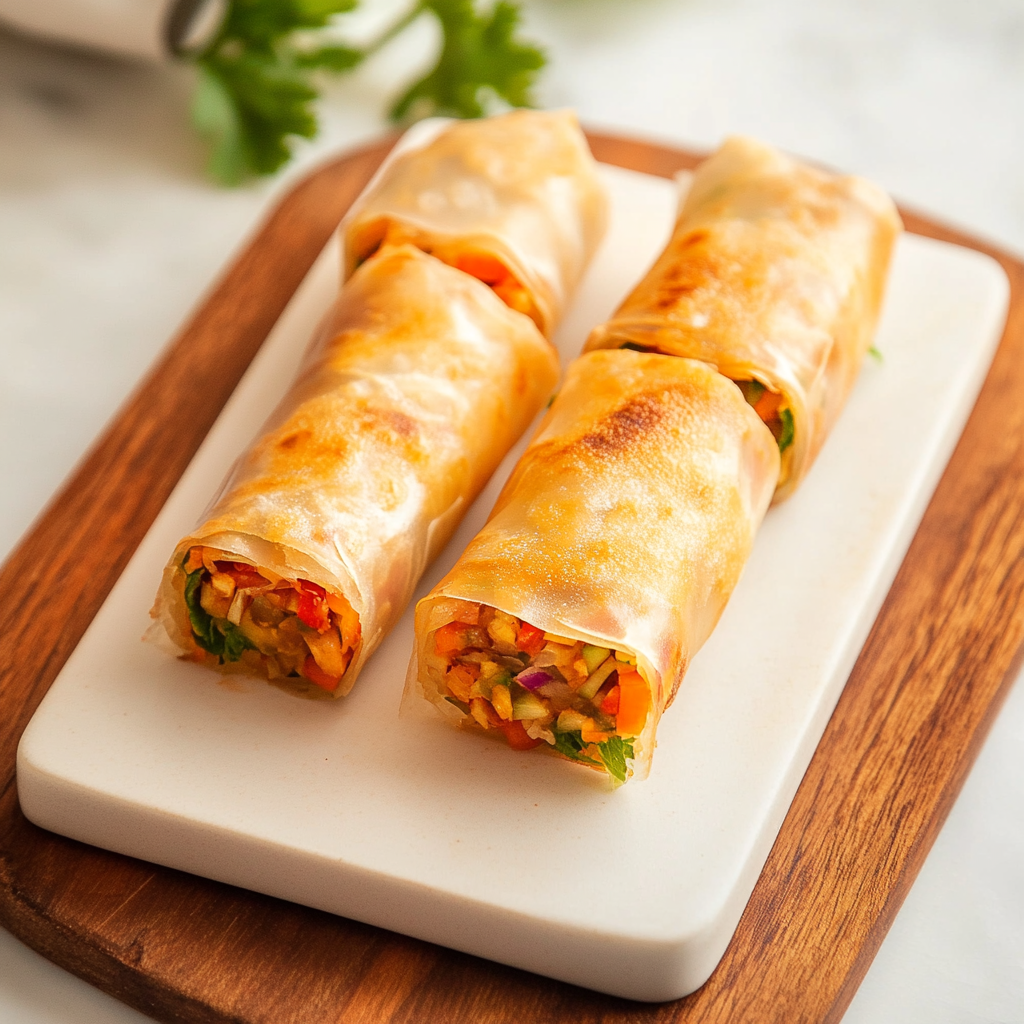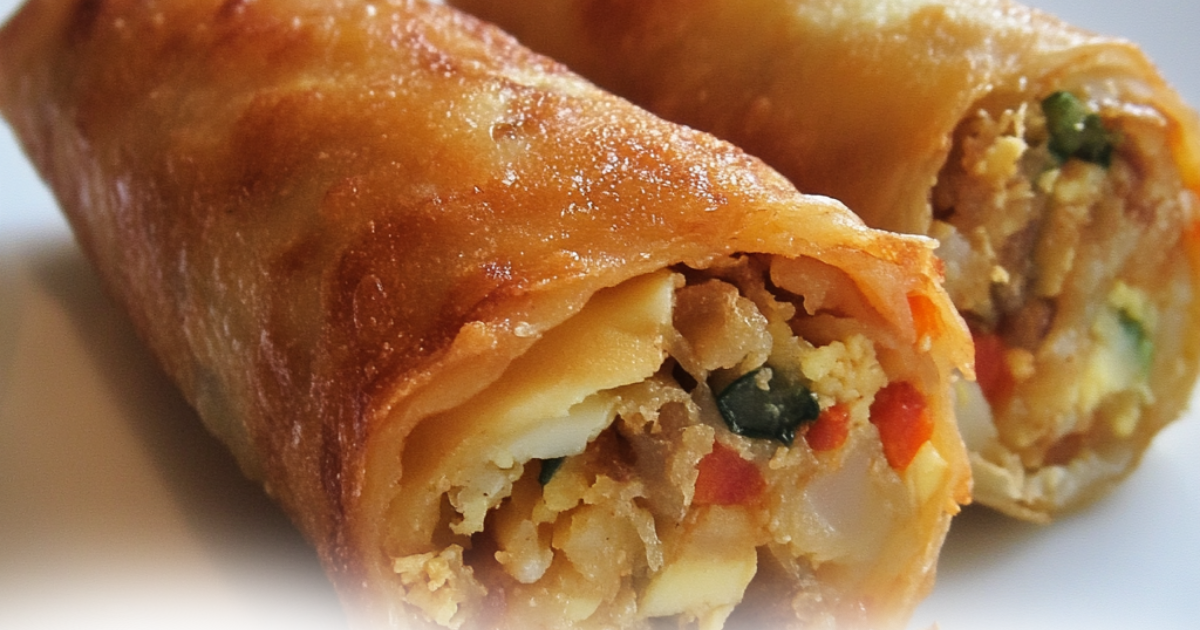Egg rolls and vegetable rolls are two beloved appetizers that share a lot of similarities but also stand apart in notable ways. While they might look alike at first glance, the differences lie in their ingredients, preparation methods, and even their cultural significance. This article dives deep into answering the question, “What is the difference between an egg roll and a vegetable roll?” By the end, you’ll not only know their unique characteristics but also feel ready to pick your favorite the next time they’re on the menu!
Table of contents
Origins and Cultural Background
The History of Egg Rolls
Egg rolls are an icon of American-Chinese cuisine, but their roots are far less traditional than you might think. Surprisingly, these crunchy delights didn’t originate in China but in New York City’s Chinatown in the early 20th century. The exact origin story is murky, with some attributing the invention to Chinese immigrants adapting traditional dishes to suit American tastes. Over time, egg rolls evolved into a culinary staple, combining crispy textures with hearty fillings.
The dough used for egg rolls—made with flour and eggs—reflects Western cooking techniques more than the lighter, rice-based wraps common in authentic Chinese cuisine. These rolls became wildly popular for their versatility, with fillings ranging from classic pork and cabbage to modern twists like cheeseburger and dessert versions.
The Journey of Vegetable Rolls
On the other hand, vegetable rolls boast a more authentically Asian pedigree. They’re an evolution of the spring roll, a dish that dates back to the Tang Dynasty (618-907 AD) in China. Spring rolls were traditionally served during the Spring Festival to symbolize prosperity and new beginnings, which explains their name.
Over the centuries, vegetable rolls spread across Asia, with each region adding its unique spin. In Vietnam, they’re often called fresh spring rolls or summer rolls, featuring vibrant vegetables wrapped in translucent rice paper. In Japan, similar rolls sometimes incorporate sushi-style fillings. This rich history gives vegetable rolls a global appeal, celebrated for their fresh, wholesome ingredients and light, satisfying taste.
Differences in Ingredients
Key Ingredients in Egg Rolls
When it comes to egg rolls, their name offers a clue about what makes them unique. The dough for these rolls is made with flour and eggs, giving the wrappers a firm texture and golden hue once fried. Inside, egg rolls often feature a mix of hearty ingredients like shredded cabbage, carrots, and pork or shrimp. Some variations even add mushrooms or bean sprouts for extra flavor.

Interestingly, egg rolls tend to pack a savory punch because of their rich, cooked fillings. Unlike their vegetable counterparts, they’re designed to be hearty and indulgent. This combination of flavors and textures makes egg rolls a favorite appetizer or snack for many. So, when asking, “What is the difference between an egg roll and a vegetable roll?”, the ingredients play a starring role.
Typical Components of Vegetable Rolls
Vegetable rolls, by contrast, are a lighter, fresher option. These rolls usually stick to plant-based ingredients, though some variations may include tofu or rice noodles for added texture. Common fillings include crisp lettuce, shredded carrots, cucumbers, and fragrant herbs like mint or cilantro. In some cases, vegetable rolls may also feature cooked or raw proteins, but vegetables remain the main focus.

The wrappers for vegetable rolls are another point of distinction. They’re often made from rice paper or thin wheat flour sheets, which are more delicate than the egg-based dough of egg rolls. Because these rolls highlight raw or lightly cooked ingredients, they appeal to those looking for a refreshing, health-conscious choice. This contrast makes the answer to “What is the difference between an egg roll and a vegetable roll?” even clearer when comparing their composition.
Wrapping and Preparation Methods
How Egg Rolls Are Made
The preparation of egg rolls begins with their sturdy wrappers. The dough, crafted from flour and eggs, is rolled into sheets, filled with ingredients, and tightly sealed. An egg wash is often used to ensure the edges stick together. Once assembled, egg rolls are deep-fried in hot oil until their outer layer becomes crisp and golden-brown.
This frying process gives egg rolls their signature crunch and slightly chewy texture. Because they’re cooked at high temperatures, the wrappers develop small bubbles on the surface, adding to their visual appeal. Compared to vegetable rolls, egg rolls are undeniably more indulgent.
Making Vegetable Rolls
In contrast, vegetable rolls embrace simplicity and versatility. Depending on the variation, they can be steamed, fried, or served fresh. Fresh vegetable rolls are especially popular, wrapped in softened rice paper that allows the vibrant colors of the fillings to shine through. To prepare, rice paper is dipped briefly in water to soften, then layered with vegetables, herbs, and sometimes rice noodles or tofu.
If fried, vegetable rolls use thinner wrappers that become crisp without being overly heavy. These preparation methods showcase the lighter, fresher side of these rolls. So, “What is the difference between an egg roll and a vegetable roll?” The cooking technique offers a clear divide: egg rolls rely on deep-frying for their signature crunch, while vegetable rolls often skip the fryer altogether.
Nutritional Differences
Caloric Content of Egg Rolls vs. Vegetable Rolls
One of the biggest distinctions when comparing egg rolls to vegetable rolls lies in their nutritional profiles. Egg rolls, with their deep-fried shells and often meat-heavy fillings, tend to be higher in calories and fat. For example, a single egg roll can pack over 200 calories and 10 grams of fat, largely due to the frying process. While this makes them satisfyingly crispy, it’s something to keep in mind for those counting calories.
Vegetable rolls, by contrast, are often viewed as the lighter choice. Whether served fresh or lightly fried, these rolls rely on fresh veggies, herbs, and sometimes tofu or rice noodles. A fresh vegetable roll can clock in at just 50–70 calories, depending on the filling and wrapper type. That’s a big difference and makes them a go-to option for health-conscious eaters asking, “What is the difference between an egg roll and a vegetable roll?”
Healthier Choices with Vegetable Rolls
Thanks to their lighter wrappers and focus on raw or minimally cooked fillings, vegetable rolls are also a fantastic source of vitamins, fiber, and antioxidants. Pairing them with dipping sauces like peanut sauce can add protein and flavor, making them a balanced snack or meal. While egg rolls have their own comfort-food appeal, vegetable rolls shine for their health benefits, Are Veggie Egg Rolls Healthy?
Popular Variations Across Cuisines
Egg Roll Fusion Dishes
Egg rolls have become a canvas for culinary creativity, especially in fusion cuisine. From cheeseburger egg rolls to dessert variations filled with cookie dough, they’ve evolved far beyond their original pork-and-cabbage roots. These innovative takes make egg rolls a versatile option for parties and gatherings, appealing to those who enjoy bold, unexpected flavors.
Another popular twist includes barbecue pulled pork egg rolls, combining smoky meat with crispy, fried wrappers. These variations highlight how egg rolls can adapt to local tastes, creating endless possibilities.
Diverse Takes on Vegetable Rolls
Vegetable rolls also enjoy their fair share of variety. Vietnamese summer rolls, for instance, often include shrimp or tofu alongside fresh vegetables, wrapped in translucent rice paper. In Japanese cuisine, sushi-inspired vegetable rolls pair vinegared rice with veggies like cucumber and avocado for a fresh twist.
Even fried vegetable rolls come in regional flavors, incorporating spices, herbs, or unique vegetables depending on the cultural context. Whether you enjoy them fresh or fried, vegetable rolls provide a lighter, more refreshing option compared to egg rolls. This flexibility underscores the answer to “What is the difference between an egg roll and a vegetable roll?” as much more than just taste—it’s about the diversity of preparation and appeal.
Sauces and Pairings
Classic Egg Roll Dipping Sauces
Egg rolls pair wonderfully with bold, tangy sauces that enhance their crispy, savory flavors. The most common choices are sweet-and-sour sauce and duck sauce, which add a sweet, tangy contrast to the deep-fried wrapper. For those who enjoy a little heat, hot mustard or sriracha also work beautifully, cutting through the richness of the fried egg roll.
Interestingly, many fusion variations of egg rolls come with unique dipping sauces. For example, cheeseburger egg rolls might be served with a zesty ketchup-based sauce or a creamy ranch dip. These sauces not only add flavor but also highlight the versatility of egg rolls in different cuisines. The role of dipping sauces is another subtle way to answer the question, “What is the difference between an egg roll and a vegetable roll?”—each roll has its own preferred accompaniments.
Accompaniments for Vegetable Rolls
Vegetable rolls, especially the fresh kind, are often served with lighter, more refreshing sauces. Peanut sauce is a classic pairing, offering a creamy, nutty flavor that complements the fresh herbs and veggies. Vietnamese vegetable rolls often come with nuoc cham, a tangy fish sauce-based dip with hints of lime and garlic.
Fresh vegetable rolls can also be enjoyed with soy-based sauces, adding a salty depth to their crisp, clean flavors. Unlike the heavier sauces used for egg rolls, these lighter pairings emphasize the natural freshness of vegetable rolls.
FAQs About Egg Rolls and Vegetable Rolls
Are Egg Rolls Authentic Chinese Food?
Despite their connection to Chinese cuisine, egg rolls are an American creation. They were invented in New York City, inspired by traditional Chinese spring rolls but adapted for Western tastes. This distinction helps clarify “What is the difference between an egg roll and a vegetable roll?” Egg rolls are a fusion dish, while vegetable rolls have deeper Asian roots.
Can Vegetable Rolls Be Customized with Protein?
Yes! While vegetable rolls are often plant-based, they can be easily customized. Add shrimp, tofu, or chicken to elevate the flavor while keeping the fresh, light vibe. This flexibility makes vegetable rolls a favorite for many diets.
What Are Common Allergens in Each Type of Roll?
Egg rolls often contain wheat (in the wrapper) and eggs, while vegetable rolls may use rice paper, making them gluten-free. However, dipping sauces might contain peanuts or soy, so always check ingredients if you have allergies.

